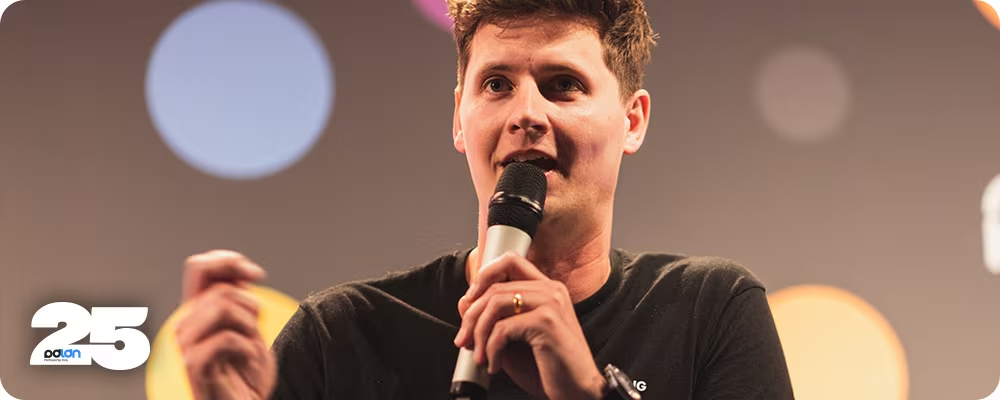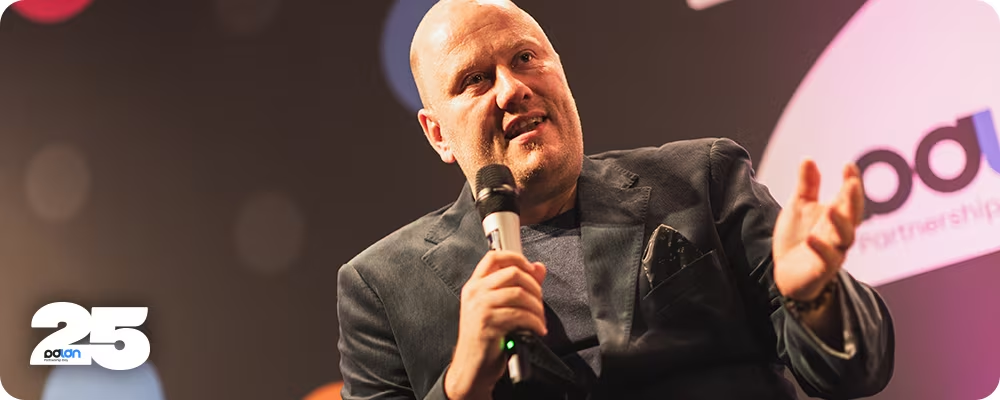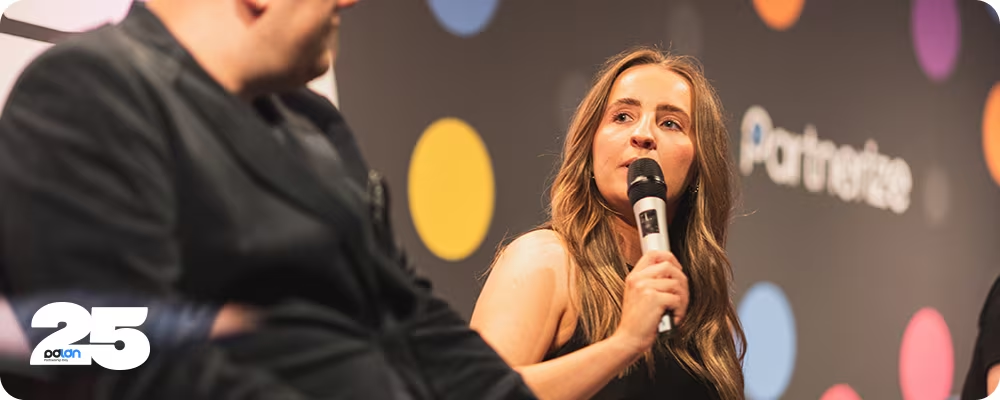Partnership Day London allowed me the privilege of joining an insightful panel discussion on Comparison Shopping Services (CSS) alongside industry experts: Erin Kristyniak (Partnerize), Melissa Urga (Bring Digital), Luke Atherton (Visualsoft), and Rob Longmate (Genie Shopping). This is an area that consistently generates interest, yet often comes with questions.

 Erin Kristyniak, Partnerize
Erin Kristyniak, Partnerize
Our conversation aimed to demystify CSS and explore its potential as a powerful optimization layer for your Google Ads strategy. Let’s dive into some key takeaways.
The Elephant in the Room: Cannibalization
Right off the bat, the biggest concern raised by clients, and echoed by Melissa and Luke, was cannibalization. The fear is that running CSS campaigns will simply eat into existing Google Shopping performance, potentially driving up Google costs and undermining a CPA model.

 Rob Longmate, Genie Shopping
Rob Longmate, Genie Shopping
However, Rob emphasized that Google’s scheme is designed to prevent direct “second pricing” against other merchants or CSS partners. While inflated CPCs shouldn’t be an issue, proper alignment, especially around your CPA (Cost Per Acquisition), is absolutely crucial. The key to differentiation, Rob highlighted, lies in rigorous testing, understanding traffic buying patterns, identifying market gaps, and leveraging back-end technology within the CSS ecosystem.
AI: The Unsung Hero of CSS?
Erin sparked an interesting discussion about the role of AI in driving CSS performance and dispelling misconceptions. While Melissa noted AI hadn’t been a direct talking point in their CSS conversations, both Luke and Rob quickly championed its value.
Luke sees AI as incredibly useful for analyzing auction insights and identifying trends – think geographic split testing to prove incrementality. Rob agreed, highlighting the benefits of Google’s smart bidding and AI’s ability to understand customer interests. Imagine using auction insights to pinpoint competitor share or identify high-demand products you’re not currently servicing! The consensus was that AI provides powerful insights and optimization capabilities, though human input remains vital for creative aspects.
CSS as an Optimization Layer: A New Perspective
Luke framed CSS not as a replacement for your existing Google Ads activity, but as a powerful optimization layer. When it comes to segmentation, he suggested moving beyond just brand or category. Instead, focus on margin and sales throughput. For example, you could prioritize high-throughput products or even dedicate new product launches to specific CSS partners to demonstrate their value.

 Luke Atherton, Visualsoft
Luke Atherton, Visualsoft
Unlocking the Full Potential: Portfolio and CPA Management
Melissa advocated for entrusting CSS partners with your full product portfolio. The trick to managing cannibalization here is to set a CPA that genuinely competes with your current Google spending. She suggested running CSS and Google Shopping in parallel for 30-90 days, allowing you to analyze performance at the SKU level and pinpoint cost-saving opportunities. Both Melissa and Luke stressed the importance of a fair approach for CSS partners and fostering a strong working relationship.
Defining Objectives and Demonstrating Value
Both Luke and Rob underscored the importance of clearly defining your client’s objectives from the outset. Are you aiming for new customer acquisition? Then set expectations around metrics like Customer Acquisition Cost (CAC). Getting the fundamentals right – from internal setup to your CPA – is key before diving into deeper optimization and proving the broader value of CSS within your overall marketing mix.
Collaboration is King: Beyond Silos
Erin brought up a critical point: the need for seamless communication and a cohesive strategy across all your channels – organic search, paid search, and affiliate. Rob acknowledged the complexities of working with diverse client setups but emphasized the immense value of bespoke conversations and genuine partnerships. He highlighted the importance of sharing learnings and tools with both agencies and clients to empower them with the right knowledge about CSS.
Luke, however, pointed out a significant challenge: internal silos. Businesses often have fragmented communication strategies between their PPC, affiliate, and other teams. True success, he argued, hinges on getting everyone on the same page and building strong rapport. Melissa shared a great example of their agency’s monthly meetings with the Genie Shopping team, which help align strategies across multiple clients.
Unique Data Insights and the “Halo Effect”
One of the most exciting aspects of our discussion was the unique data insights CSS can offer. Melissa had an “aha moment” when she saw SKUs performing exceptionally well in CSS that weren’t even being pushed through organic Google. This clearly demonstrates CSS’s complementary role.

 Melissa Urga, Bring Digital
Melissa Urga, Bring Digital
Rob noted that brands particularly value impression share data, showing how CSS can take share from competitors while the brand’s own share remains stable. He also highlighted the attributed value and the “halo effect” of CSS campaigns, where they drive a significant number of assists to other channels. While this clearly shows a large overall contribution, Rob acknowledged the challenge of leveraging this data for increased budgets due to prevalent last-click attribution models.
Final Thoughts and Next Steps
Our audience for this discussion was a mix of enterprise and mid-size businesses. While we didn’t have time for a live Q&A, I encourage you to reach out to the panellists if you have further questions.
Melissa eloquently summarized CSS’s place, emphasizing its valuable role within the marketing mix, often delivering strong ROAS. Luke suggested aligning opinions to reinforce the value of CSS within the affiliate channel.
Rob highlighted the immense credibility gained from seeing results from agencies and brands, underscoring the importance of data and case studies. Luke shared a few examples of brands they work with and their ongoing CSS efforts within the affiliate space.
The message is clear: CSS is a powerful tool with immense potential to optimize your search presence and drive tangible results. By understanding its nuances, embracing collaboration, and leveraging data-driven insights, you can truly unlock its power for your business.
Final Thoughts and Next Steps
Our audience for this discussion was a mix of enterprise and mid-size businesses. While we didn’t have time for a live Q&A, I encourage you to reach out to the panellists if you have further questions.
Melissa eloquently summarized CSS’s place, emphasizing its valuable role within the marketing mix, often delivering strong ROAS. Luke suggested aligning opinions to reinforce the value of CSS within the affiliate channel.
Rob highlighted the immense credibility gained from seeing results from agencies and brands, underscoring the importance of data and case studies. Luke shared a few examples of brands they work with and their ongoing CSS efforts within the affiliate space.
The message is clear: CSS is a powerful tool with immense potential to optimize your search presence and drive tangible results. By understanding its nuances, embracing collaboration, and leveraging data-driven insights, you can truly unlock its power for your business.
To learn more about Partnership Day London or about Partnerize, contact us here.